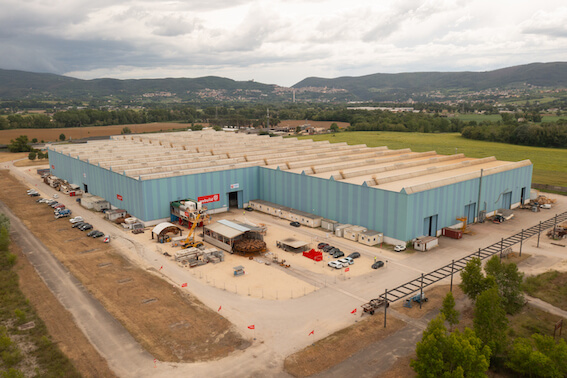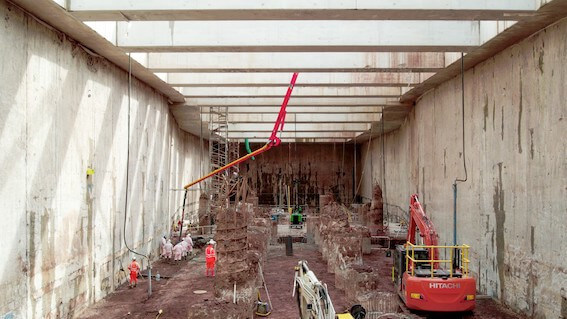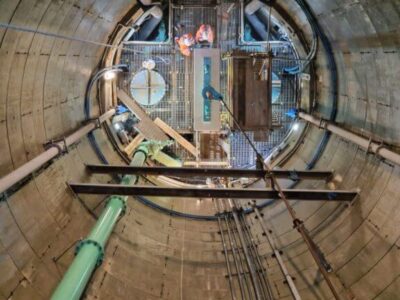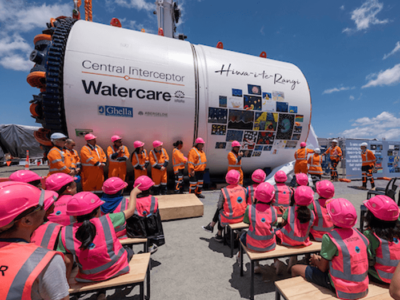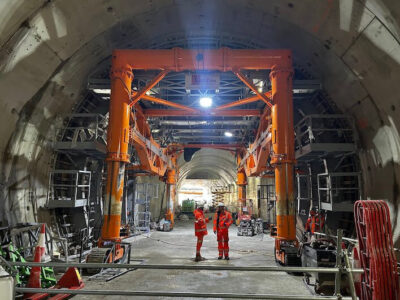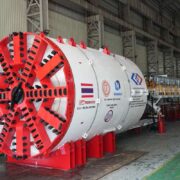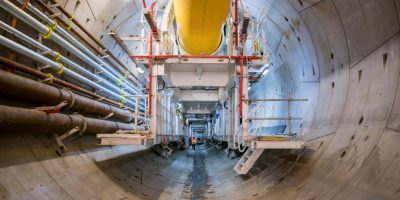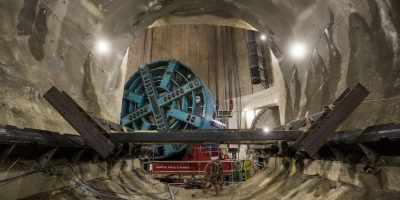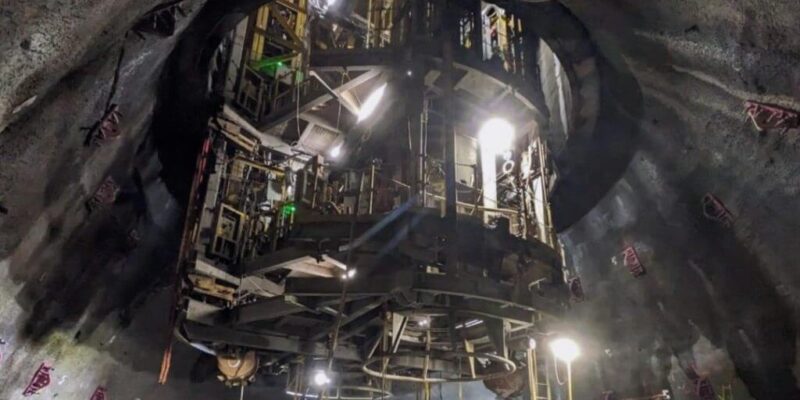
The team building the Woodsmith polyhalite project in North Yorkshire has achieved a pivotal stage of construction work on the mineral transport system shaft of the complex.
Joseph Gallagher, the subcontractor civil engineering company, recently started to apply sprayed concrete lining (SCL) to the Woodsmith project’s mineral transport system (MTS) shaft that is 360m deep.
The project in Whitby in the northeast of England will expedite access to a considerable deposit of polyhalite, a natural mineral fertilizer product including potassium, sulfur, magnesium, and calcium.
Anglo American, a British mining company, has developed the complex, which includes two deep shafts – a service shaft and a production shaft – and three shallow shafts – the MTS shaft and two intermediate access shafts.
The service shaft and the production shaft develop from ground surface level to a depth of 1.6km to tap into a polyhalite seam deep underground. These deep vertical shafts link with a 37km long horizontal mineral transport system tunnel that is said to be employed to transport the potash from the mine to the port at Teesside.
Anglo American reported in its half-year financial results in June 2023 that sinking activities at the two deep shafts are advancing pleasingly. By then, the service shaft was 500m deep, and the MTS tunnel had reached 24km in length.
The mineral transport system tunnel is being built with a tunnel boring machine (TBM). However, there was a scheduled maintenance pause in mid-2022 to refurbish the tunnel boring machine and to enable the connection with one of the shallow shafts.
Shaft sinking on the production shaft began at 120m below surface level in January 2023. Anglo American claimed that the sinking “ramped up to planned sinking rates” and reached a depth of 245m.
Concurrently, the excavation of the three shallow shafts is complete, which comprises the MTS shaft, which links to the production and service shafts at depth, and the Lockwood and Ladycross Beck intermediate access shafts, which provide further access to the MTS tunnel.
The initial 115m of the MTS shaft was sunk utilizing a vertical shaft sinking machine. The next phase of shaft sinking used the drill and blast method. As reported, a multi-decked work stage platform known as a Galloway was used to carry equipment during this process.
Last week, Joseph Gallagher declared that its crews were applying SCL to “the final section of the inset brow development” on the MTS shaft. The company stated that it marked the “exciting start of the next phase of the lateral development tunnels.”
Other contractors working on the project construction comprise Strabag, which is in charge of the tunneling, and Redpath Mining, which has specialist shaft sinking expertise.
Worley has received the award for the contract of program management services and engineering, procurement, and construction management.
Besides the core infrastructure developments, Anglo American has been “enhancing” the project’s configuration so that the complex will have a higher production capacity.
Anglo American expressed that this concerns adding infrastructure, which is “optimally designed to enable optionality in the future and maximize long-term value over the expected multi-decade asset life.” Also, investigations are underway to declare the new configuration.
Schedules to reconfigure the project have been ongoing since the end of 2021, when Anglo American revealed that it would review the scope, design, and approach to implementing the project.
Anglo American articulated in December 2022 that the reconfiguration would enable “future optionality for a larger operating footprint” for the mine, “to be delivered in a phased approach in step with market development”.
Tom McCulley, Anglo American CEO, expressed in a corporate update on the company’s progress towards sustainable mining that it was “critical” that the company embeds the latest thinking and technologies into safe and sustainable modern mine designs at projects such as Woodsmith and its Quellaveco copper mine in Peru.
He mentioned: “Building on the blueprint for success established at Quellaveco, we will continue to deploy the integration of technology and sustainability at Woodsmith to set a new benchmark for modern mining – out of sight, safe, reliable, and catering to our customers and society’s needs.”
Anglo American’s capital expenditure for the project was £400M in 2022, with £650M authorized for 2023 to advance the critical path activities, containing shaft sinking and tunnel boring. The investment for the following three years is predicted to be £800M per year.


